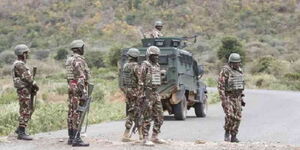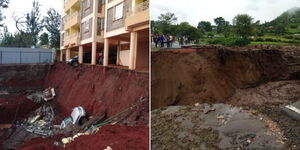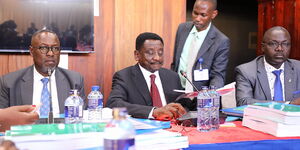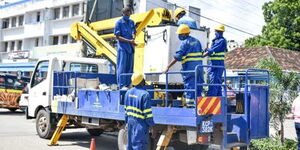In 2018, the Ministry of Education introduced a new system where all learners in educational institutions, from nursery to university, are required to have a Unique Personal Identifier (UPI) number.
According to the Ministry, the six-character UPI is an inaugural measure to hinder the occurrence of fake certificates, curb the theft of public funds through ghost teachers and check the exaggerated student enrolment figures.
The number is similar to the PIN issued by the Kenya Revenue Authority (KRA) and in like manner, will track the progress of a student all through their academic life.
Keep reading this article to find out how you can track learners' performance in Kenya.
What is NEMIS?
The National Education Management Information System (NEMIS) is web-based data management solution which collects data and information from education institutions; processes and reports the status of designed indicators, and provides the sector a solid ground for effective management to ensure that every Learner counts.
The online platform tracks performance mobility of learners and teaching staff to ensure efficiency and effective utilization of education resources.
What are the objectives of NEMIS?
The objective of NEMIS is to help streamline the data management for informed decision-making and planning of the education sector by hosting student/pupil data, linked to a Unique Identifier that is randomly generated using a verifiable algorithm.
Specific objectives include:
(1). Online platform for capture of education data at school level (school and learner information)
(2). A platform that allows all education agencies to share data collected to ease and facilitate administrative and decision-making processes
(3). Provide an integrated Business Intelligence (BI) that provide statistics used to report national and international indicators in education and training sub-sectors
(4). Provide flexibility of handling of resources (including infrastructure support, and facilitation of school feeding programmes) that go to educational institutions
(5). Help in the tracking of costing parameters in education and training
(6). With the inclusion of the Geographic Information System (GIS) components, Online Platform will help in the geographical analysis of education indicators (including the production of various maps much needed in the education sector).
Target group for NEMIS users
NEMIS is designed for use by education stakeholders, key among them the following groups:
a.) Ministry of Education
b.) Ministries, Departments, and Agencies
c.) Teachers
d.) ICT professionals
e.) Learners
f.) Parents/Guardians
g.) Development Partners
h.) Kenya Primary School Heads Association
i.) Kenya Secondary School Heads Association
j.) National Secondary School Association
k.) Kenya Private School Association
l.) System Specifications
How to register on NEMIS
Once you register on NEMIS, you will get a UPI (Unique Personal Identification) number that you will be using to access the system.
With this number, anyone with the password can log in to NEMIS and learners' academic performance from primary school to high school and tertiary levels.
Here is the procedure:
Visit the NEMIS portal at
1. Log onto the system by using the official log in credentials; User Name and Password.
2. Click on the ‘LEARNER’ tab and select ‘View my learners’ from the drop-down list.
3. Select the Class/ Form of the learner. A list of learners will be displayed.
4. At the top left corner of the list, locate and click on the ‘ADD NEW STUDENT’ tab. A new window titled ‘Learner Bio Data’ is displayed.
5. Enter the learner’s details correctly i.e Surname, First Name, Other Names, Birth Certificate Entry Number, Date of Birth, Gender, Nationality, and Special Condition (if any). Click on ‘SAVE BASIC DETAILS’ once done.
6. The Learner will be accorded a new UPI.
7. Select and correctly update details on the other two tabs; Contact details and Special Needs.
8. Note: To edit the Learner’s details, open the form that the learner is currently placed by using the ‘LEARNER’ tab, locate the learner in the list and Click on ‘VIEW’.
Note: Passwords used at registration should be remembered. Should one forget the same, it is possible to get a new one.
However, this comes with a limitation; it is only to reset 24 hours after the last reset.
What is NEMIS is expected to enhance?
1. Proper referencing of schools using a School Code
Through NEMIS, each institution of learning will be issued a mandatory unique four-character identifier.
The ministry says that any school that will have no unique code shall be deemed not to be existing.
2. Proper and Consistent Student/Pupil Identification
NEMIS generates a Unique Personal Identifier (UPI), a unique six-character code that will be used at every stage of the learner’s education for identification and reference.
3. Accountability
NEMIS is expected to enable the Ministry to efficiently and transparently allocate resources to learners to enhance maximum efficiency and value for the Kenyan taxpayer.
Dis-aggregated learner-level data on educational expenditures will help policymakers establish the equity and efficiency in resource allocation for instance book ratios; pupil-teacher ratios etc.
It will also help purge ghost children and ensure that capitation allocation is used for intended purposes.
4. Informed decision making and planning
NEMIS big-data will be analyzed and then utilised in decision making at all levels of education.
Data-driven planning is known to be more effective for an education system as resources are allocated effectively.
5. Monitoring and Evaluation
NEMIS is expected to generate education statistics on institutions, enrolment, human resources, and physical facilities hence ease in monitoring and evaluation.
NEMIS Modules
The NEMIS comprises four key modules:
1. Institutions Module
2. Learners Module
3. Staff Module
4. Finance Module
Each of these modules has sub-modules within them. The functions and details of the modules are as captured below.
Institutions Module
This module captures registration and physical aspects of an institution. It achieves this through its six sub-modules as presented below.
a.) Institutions Registration: The purpose of this submodule is to register an institution with the Ministry; both Existing schools and news schools will use this.
b.) School infrastructure: It captures equipment and fixed assets in terms of quantity and acquisition date
School Utility: Captures the utility name and brief description of the utility type.
c.) Co- Curricula: Captures the co-curricular activities that take place in institutions, year and the highest level achieved.
d.) Teaching and learning material: Captures specific quantity of learning materials both the course books and the supplementary books.
e.) Emergency reporting: Enables the school administration to capture any disaster that affects the institution.
Learners Module.
Learners Module
This module captures every detail necessary from learners beginning from their registration; their performance and progression in the education system; and their transition from one level to another.
The learner module has five sub-modules as follows:
a.) Unique Personal Identifier: This module enables the learner to input birth certificate, ID number or Alien number where the system will auto-generate a UPI.
b.) Learner Registration: Captures contact details of the learner.
c.) Student mobility: Captures details of the learner, mobility type, discharging institution and the new institution.
d.) Performance Progression: Captures performance details of each learner after completion of a specific level, e.g. Primary, Secondary, etc.
e.) Learner Talent: Captures details on learner’s talents.
Staff Module
This module captures every detail necessary from members of staff (teaching and non-teaching) beginning from their appointment and mobility within the education sector.
The module has five sub-modules as follows:
a.) Teachers and Non-teaching staff registration Module: This interface captures teachers and non-teaching staff personal details in an institution.
b.) Teacher Mobility: This interface captures transfers of teachers from one institution to the other. It also displays the transfer history of a teacher.
c.) Teaching areas: This Interface captures subjects/units a teacher is teaching in an institution.
d.) Study Areas: This interface captures areas a teacher is trained on.
e.) Teachers’ responsibilities: This interface captures duties assigned to a teacher within an institution.
Finance Module
The finance module helps track income and expenditure in all institutions through its five sub-modules.
a.) Fees: This interface captures the fee amount of an institution with all the approved fee items.
b.) Capitation: This interface is for setting up the capitation to be disbursed to public Primary and Secondary school in a given term within a calendar year.
c.) Income Returns: This interface captures all amount received by the Institution within a given in a year.
d.) Development Fund: It interface captures projects funded in an institution within a given financial year.
e.) Expenditure Returns: This interface captures the actual amount spent, milestones achieved and the percentage completed in a project.
NEMIS System Specifications
To effectively access the NEMIS portal, the following specifications have been identified as the minimum requirements.
i) Hardware
2.4 GHz processor; 1 Gigabyte of Random Access Memory (RAM) for Windows Vista and higher Operating System (OS); 120 Gigabyte available hard disk space.
ii) Software
The system is compatible with all Operating Systems e.g. Windows7, Windows 10, iOS (Apple), Android among others.
Internet browsers including internet explorer, Safari, Opera Mini, Mozilla Firefox, Google Chrome, among others can be used in accessing the system.
You will need applications such as Microsoft Office, Open office among others available in the market to access outputs of the system.
iii) Network Connectivity
Broadband connectivity at least 3G with 2 Megabytes per second (Mbps) speed on dedicated links.
iv) Other Devices
To ensure full interaction with the system and specifically the data capture, users are advised to have a digital camera for capturing the images of learners.
Other complementary and support devices will include a LaserJet printer, laptops, desktop computers, tablets or smartphones, or tablets.
To IT Services providers whose clientele is the education sector, especially schools, they perceive that this would trigger a huge decline in the demand for processes automation softwares in learning institutions.
Based on the insights above, however, it is clear that NEMIS does not cater for all the automation a learning institution requires; both public and private schools.
Having an Enterprise Resource Planning (ERP) software for schools or colleges, therefore, would help fill the gaps of streamlining and simplifying admission of students, managing of finances, procurement, exam processing, human resource (HR), library and transport management.












